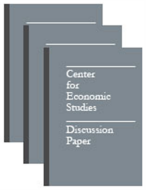
An official website of the United States government
Here’s how you know
Official websites use .gov
A .gov website belongs to an official government organization in the United States.
Secure .gov websites use HTTPS
A lock (
) or https:// means you’ve safely connected to the .gov website. Share sensitive information only on official, secure websites.
-
//
- Census.gov /
- Library /
- Census Working Papers /
- Disconnected Geography: A Spatial Analysis of Disconnected Youth in the United States
Disconnected Geography: A Spatial Analysis of Disconnected Youth in the United States
Disconnected Geography: A Spatial Analysis of Disconnected Youth in the United States
Abstract
Since the Great Recession, US policy and advocacy groups have sought to better understand its effect on a group of especially vulnerable young adults who are not enrolled in school or training programs and not participating in the labor market, so called ‘disconnected youth.’ This article distinguishes between disconnected youth and unemployed youth and examines the spatial clustering of these two groups across counties in the US. The focus is to ascertain whether there are differences in underlying contextual factors among groups of counties that are mutually exclusive and spatially disparate (non-adjacent), comprising two types of spatial clusters – high rates of disconnected youth and high rates of unemployed youth. Using restricted, household-level census data inside the Census Research Data Center (RDC) under special permission by the US Census Bureau, we were able to define these two groups using detailed household questionnaires that are not available to researchers outside the RDC. The geospatial patterns in the two types of clusters suggest that places with high concentrations of disconnected youth are distinctly different in terms of underlying characteristics from places with high concentrations of unemployed youth. These differences include, among other things, arrests for synthetic drug production, enclaves of poor in rural areas, persistent poverty in areas, educational attainment in the populace, children in poverty, persons without health insurance, the social capital index, and elders who receive disability benefits. This article provides some preliminary evidence regarding the social forces underlying the two types of observed geospatial clusters and discusses how they differ.
Others in Series
Working Paper
Working Paper
Working Paper
Share
Related Information
Some content on this site is available in several different electronic formats. Some of the files may require a plug-in or additional software to view.
 Yes
Yes
 No
NoComments or suggestions?


Top

